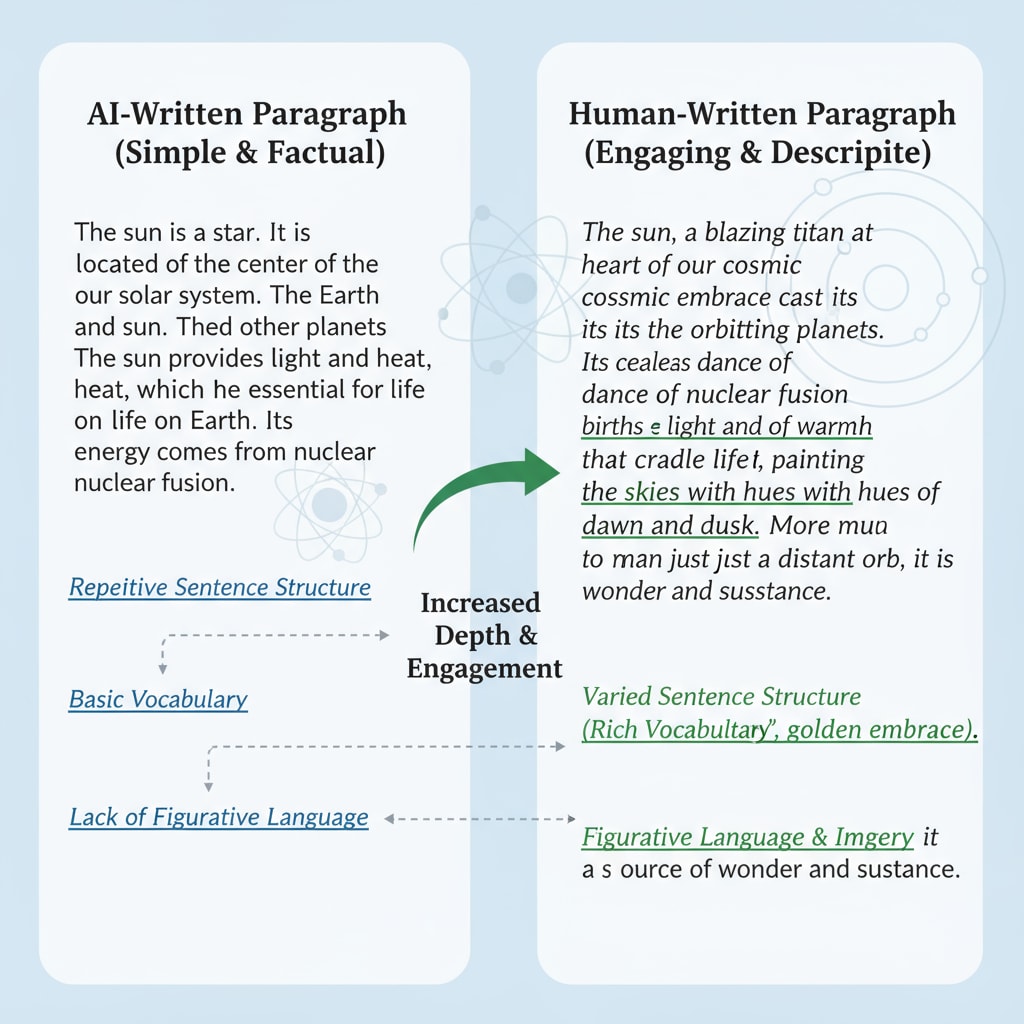In the age of AI writing, authenticity, and writing instruction have taken on new significance. The proliferation of AI writing tools has presented novel challenges to K12 education. As students are increasingly exposed to these tools, it is crucial to teach them how to distinguish between AI-generated and human-written content.

This not only helps in maintaining academic integrity but also in developing a deeper understanding of the true nature of writing.
The Challenge of AI in Writing Education
The rise of AI writing tools has blurred the lines between human and machine-generated writing. These tools can produce grammatically correct and seemingly coherent texts in a matter of seconds. For example, platforms like ChatGPT can generate essays, stories, and reports on various topics. However, this convenience comes at a cost. Students may be tempted to use these tools to complete their assignments, undermining the learning process. Therefore, it is essential for educators to address this issue head-on and develop effective teaching strategies. Artificial Intelligence in Education on Wikipedia

Teaching Students to Discern AI from Human Writing
One of the first steps in redefining writing education is to teach students how to tell the difference between AI and human writing. Educators can start by analyzing the characteristics of each. AI-written texts often lack the depth of thought, creativity, and personal touch that human writing possesses. They may also follow certain patterns and structures that are repetitive. By comparing examples of AI-generated and human-written pieces, students can learn to identify these differences. Additionally, teaching students about the limitations of AI, such as its inability to truly understand context and emotions, can help them recognize when a text is likely to be generated by a machine. Artificial Intelligence on Britannica
Understanding the principles of writing detection tools is also crucial. These tools use algorithms to analyze various aspects of a text, such as vocabulary, sentence structure, and citation patterns. By familiarizing students with how these tools work, educators can empower them to use these tools responsibly and also be more aware of the signs that could flag a text as potentially AI-generated.
Readability guidance: The key points here are the challenges AI poses to writing education and the importance of teaching students to distinguish between AI and human writing. Short paragraphs and clear explanations help maintain readability. Transition words like ‘therefore’ and ‘additionally’ are used to connect ideas smoothly.
The Value of Developing Personal Writing Style
In addition to discerning AI from human writing, it is vital to encourage students to develop their personal writing styles. This is where the true authenticity of writing lies. A personal writing style reflects a student’s unique perspective, voice, and creativity. Educators can foster this by providing opportunities for students to write on topics they are passionate about, allowing them to experiment with different writing techniques, and providing constructive feedback. When students develop their own style, they are less likely to rely on AI-generated content and more likely to engage in the writing process authentically.
To conclude, in the age of AI writing, authenticity, and writing instruction need to be reimagined. By teaching students to distinguish between AI and human writing, understand the principles of writing detection tools, and develop their personal styles, educators can help students develop the real writing abilities that are essential in the digital age. This approach not only prepares students for academic success but also equips them with the skills they need to communicate effectively in the real world.


